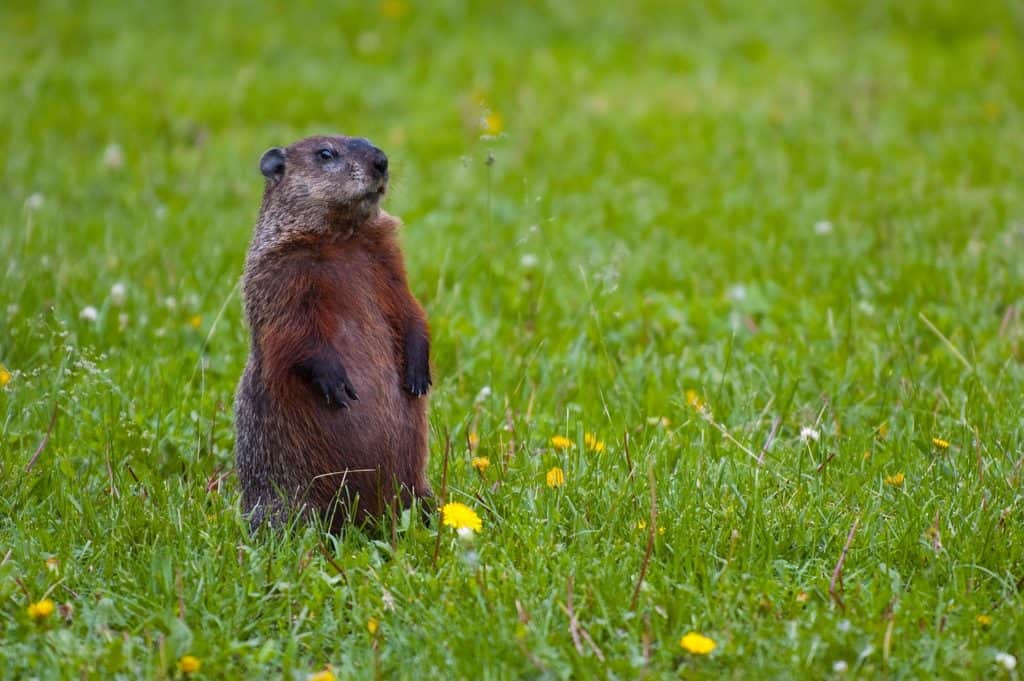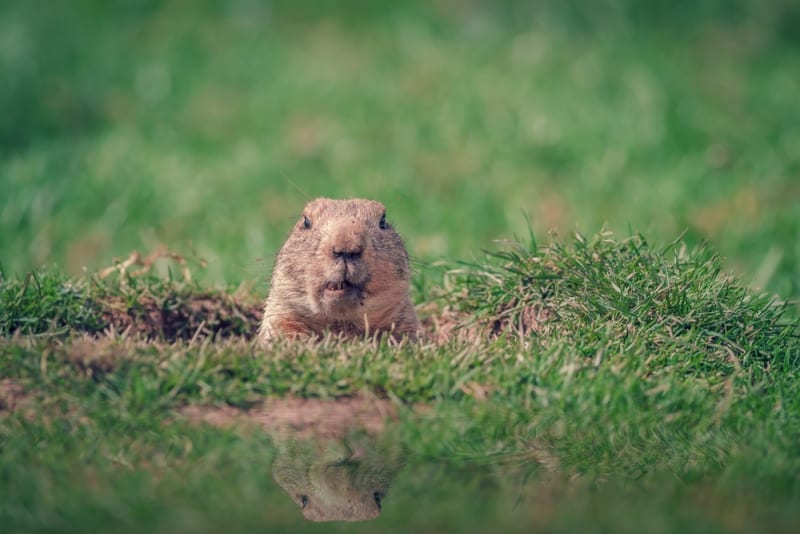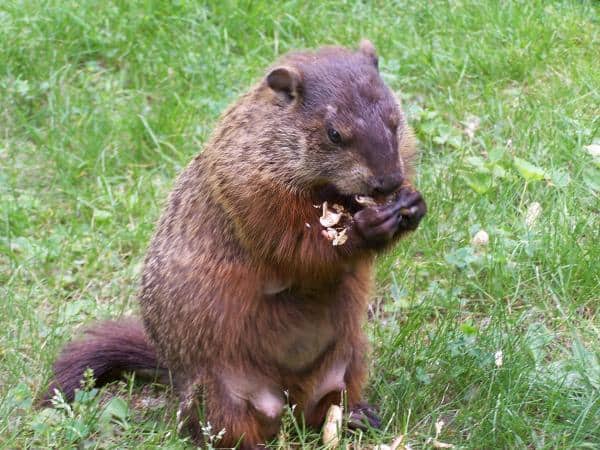Groundhog or Woodchuck?

The groundhog, also known as a woodchuck, whistle-pig or land-beaver, belongs to the group of large ground squirrels known as marmots. Most people consider woodchucks as garden pests, since their diet consists primarily of plants like grass, fruits, agricultural crops, berries and tree bark. However, they are also known to eat insects, grubs, caterpillars, snails and grasshoppers.

Common throughout North America, groundhogs are lowland creatures with short but powerful limbs and curved, thick claws for digging. Their spine is curved and they have two coats of fur. Woodchucks are also equipped with two large incisors that grow about a sixteenth of an inch each week.
Groundhogs are one of the few animals that undergo complete hibernation during the winter season. During the summer, they eat all season to accumulate body fat. When winter comes (October-March), they escape to their burrows, curl into a ball, slow their heartbeat and lower their body temperature from 99° to 37°. During hibernation, the stored fat gives them all the necessary nutrients. The arrival of spring (March-April) signifies new life for groundhogs – a litter of 4-6 pups are born at this time of year!

A woodchuck’s burrow, consisting of many entrances and exits, is the ideal place for sleeping, raising young pups, and escaping predators like wolves, coyotes, foxes, bobcats, large hawks, owls and dogs. Burrows are often found in forest edges near open fields like roads and streams. A groundhog serves as a guard to the burrow, making a high-pitched whistle to alert others of danger or an incoming predator.
The Algonquian name for the groundhog is “wuchack”, which evolved into “woodchuck”. Throughout history, Europeans believed badgers or hedgehogs provided signals about the future. Lacking those species in Pennsylvania in the 1800s, Clymer Freas, publisher of the Punsautawney newspaper, substituted the groundhog as a weather predictor. Since then, woodchucks have been the subject of a famous tongue twister and popular American tradition observed annually on February 2nd!
Source & Images:
https://www.livescience.com/57922-groundhog-facts.html
https://www.ncwildlife.org/Learning/Species/mammals/groundhog
